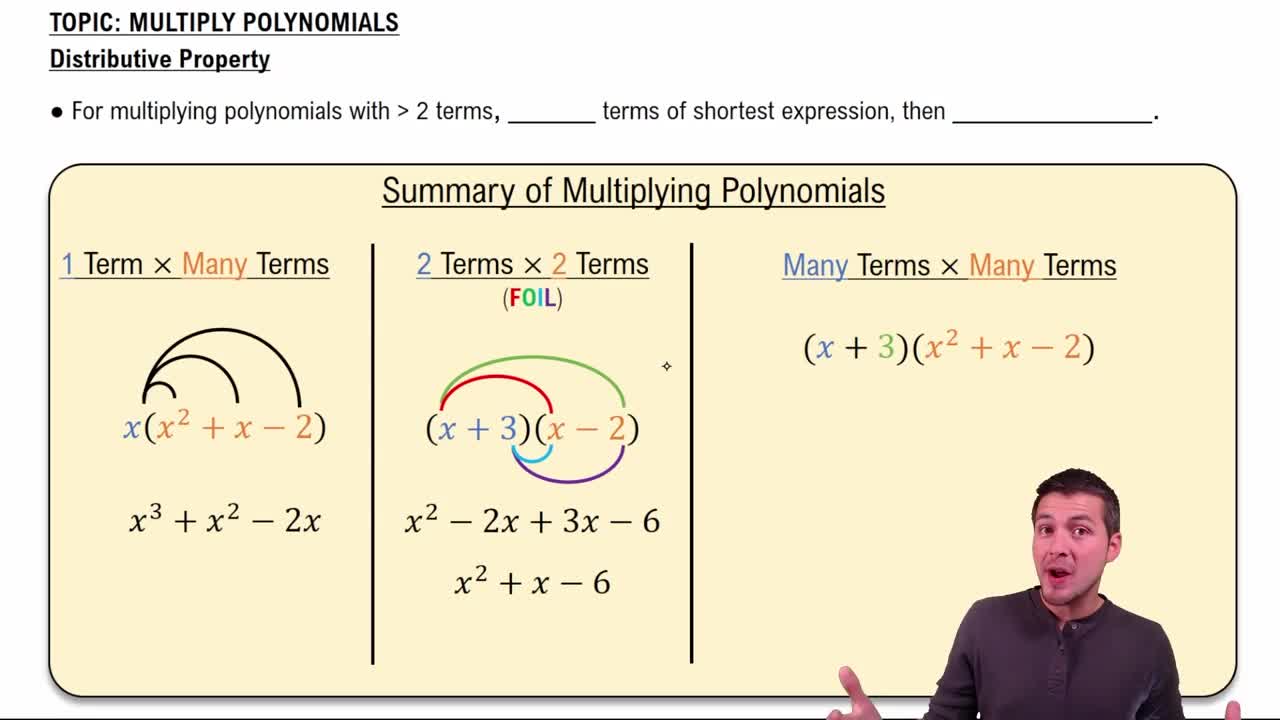Here are the essential concepts you must grasp in order to answer the question correctly.
Exponential Rules
Exponential rules are fundamental principles that govern the manipulation of expressions involving exponents. Key rules include the product of powers, power of a power, and power of a product. For example, when raising a power to another power, you multiply the exponents. Understanding these rules is essential for simplifying expressions like (−3x^2 y^5)^2.
Recommended video:
Cramer's Rule - 2 Equations with 2 Unknowns
Distributive Property
The distributive property is a key algebraic principle that allows you to multiply a single term by each term within a parenthesis. In the context of exponents, this means applying the exponent to each factor inside the parentheses. For instance, in (−3x^2 y^5)^2, you would distribute the exponent 2 to −3, x^2, and y^5, leading to a simplified expression.
Recommended video:
Multiply Polynomials Using the Distributive Property
Negative Exponents
Negative exponents indicate the reciprocal of the base raised to the opposite positive exponent. While this concept is not directly applicable in the given expression, understanding it is crucial for broader exponential simplifications. For example, a term like x^(-n) can be rewritten as 1/(x^n), which is important when dealing with more complex expressions involving negative bases or exponents.
Recommended video:
 Verified step by step guidance
Verified step by step guidance Verified video answer for a similar problem:
Verified video answer for a similar problem:



 7:39m
7:39m